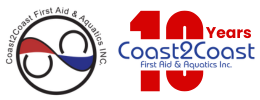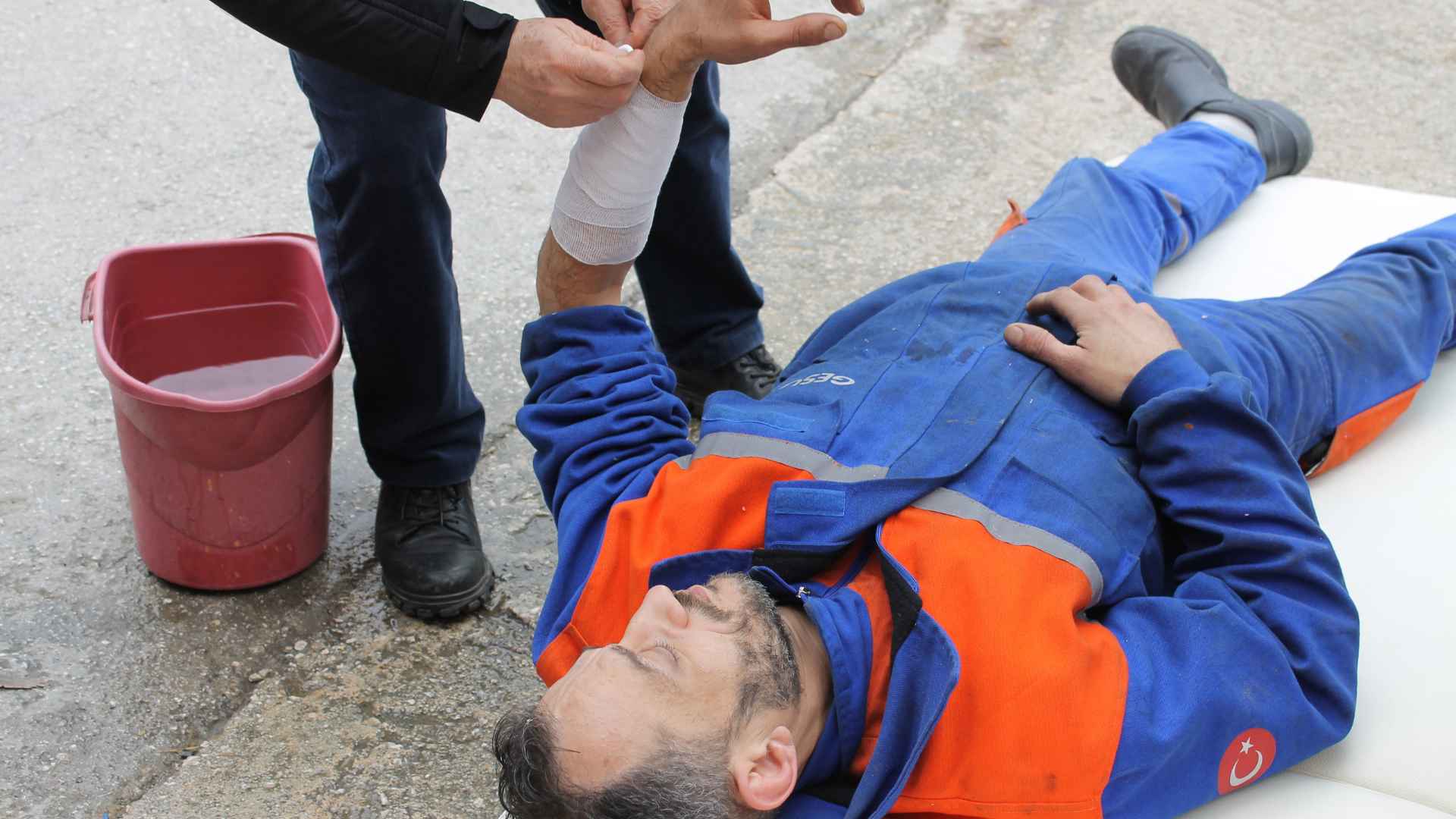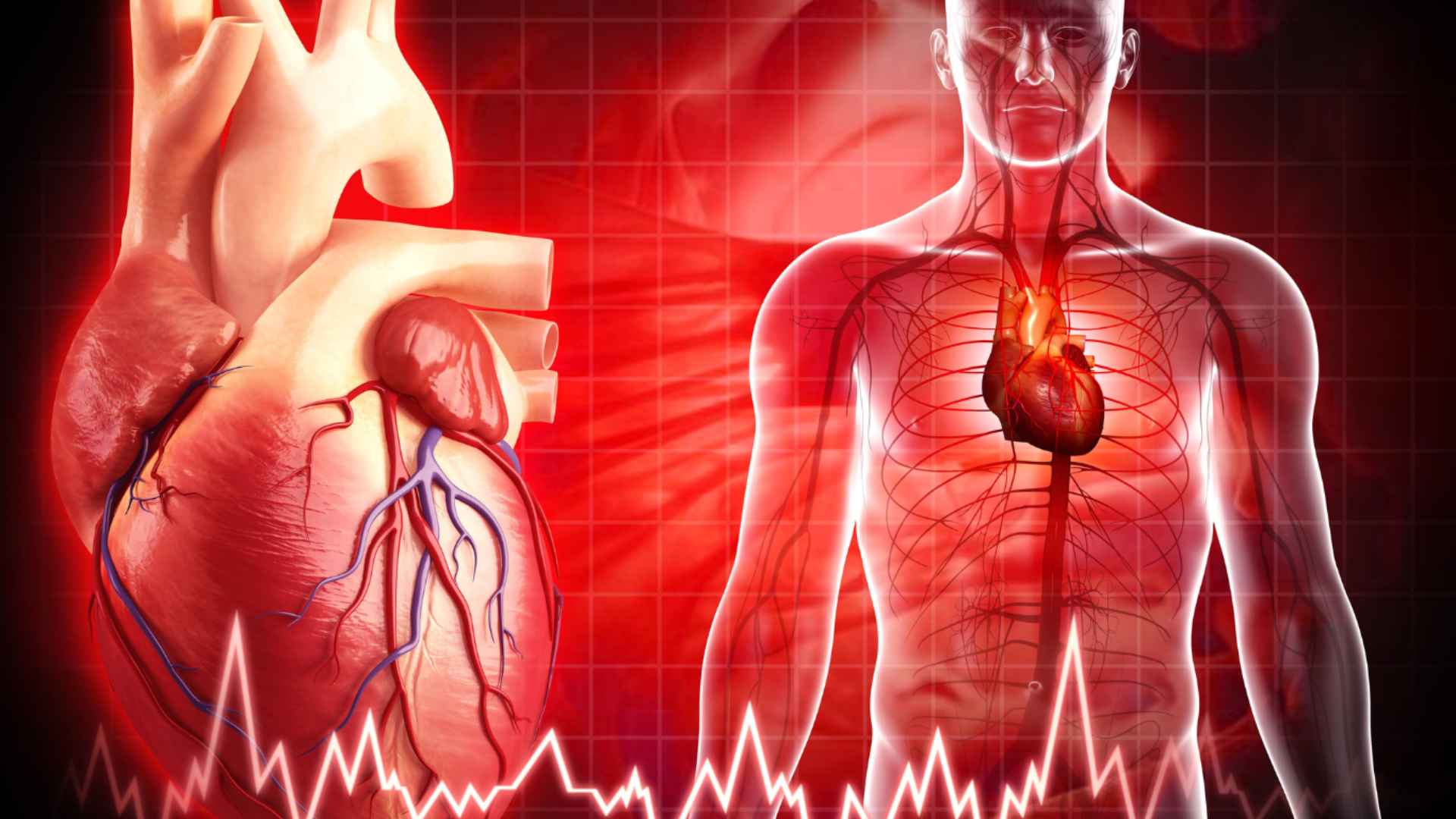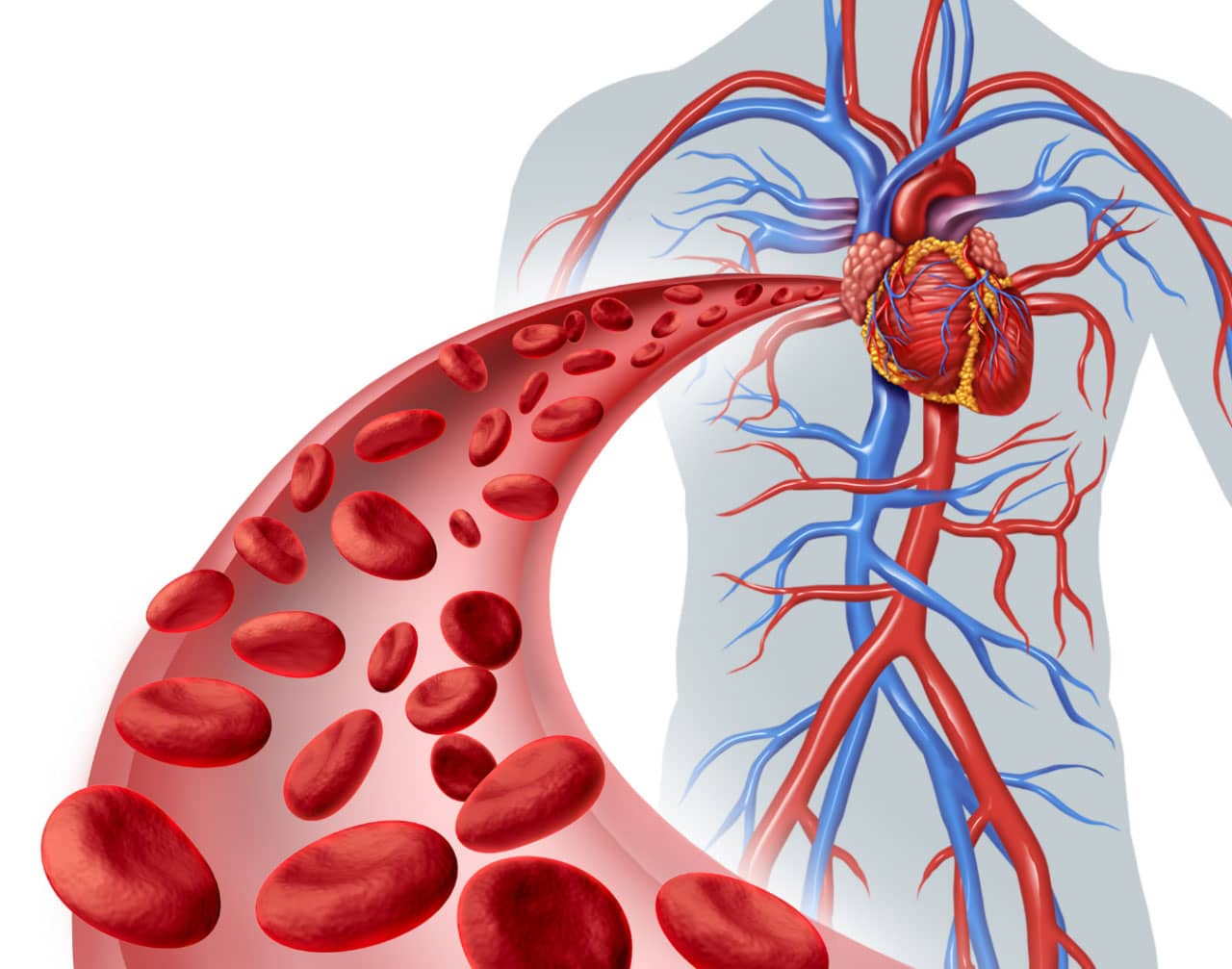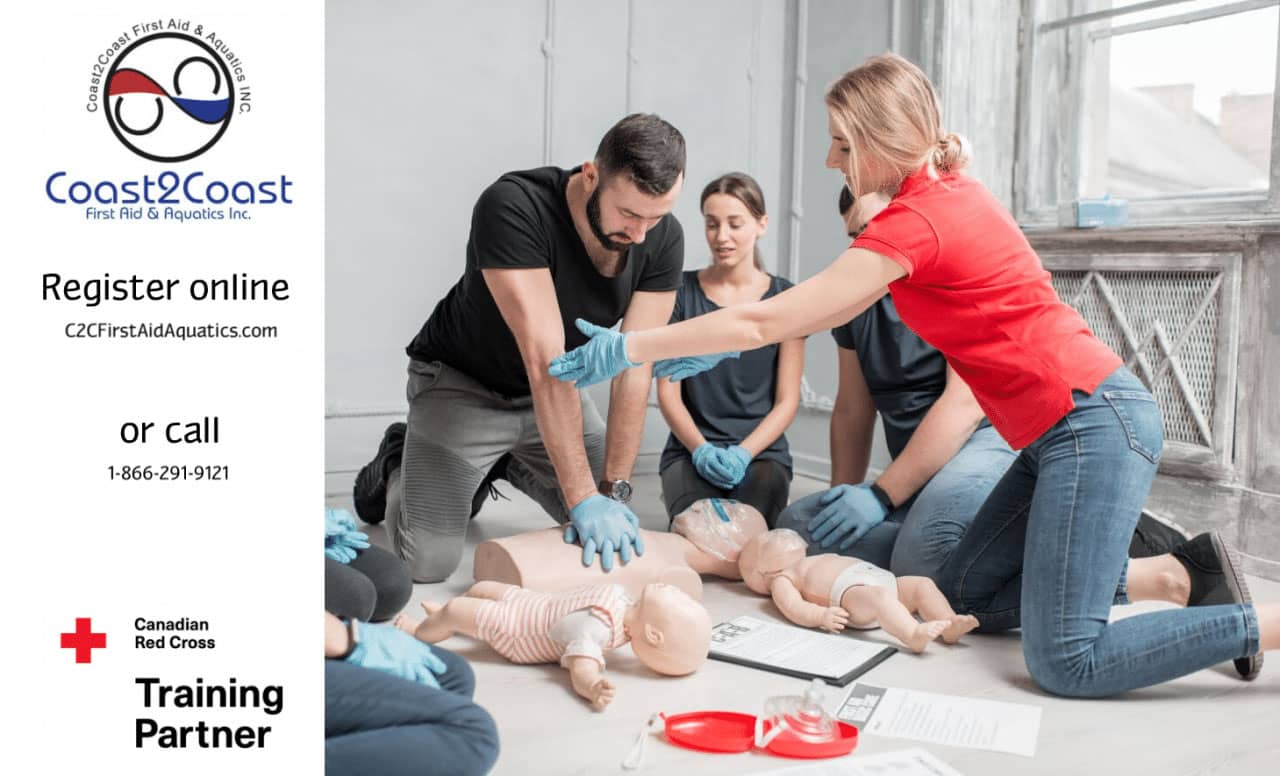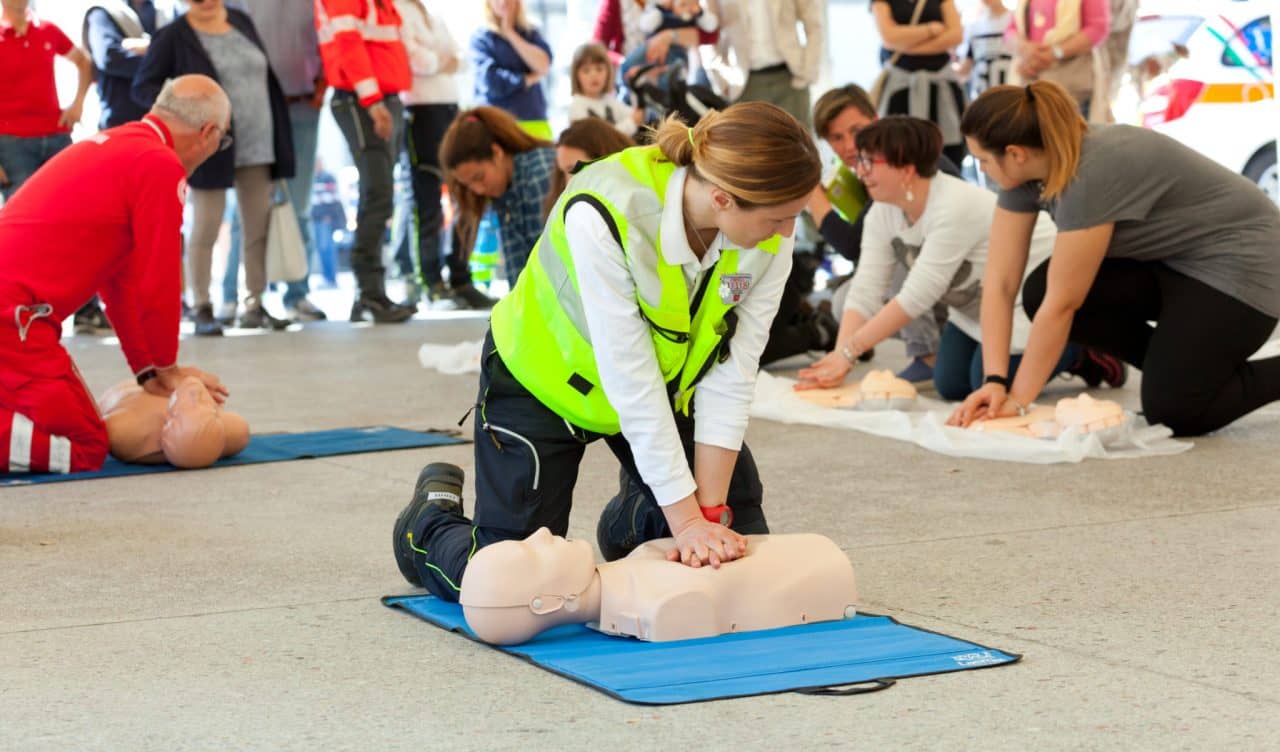In this article, we will be giving you an overview of several medical emergency scenarios and a comprehensive guide on best practices for handling them. It is crucial to emphasize that knowing what to do and being actually trained to do it are two very different things. This article will give you an idea of how to act and what aid techniques to provide in various situations, but under no circumstance should this online guide be taken as official training or certification.
Continue readingIs Cardiac Arrest the Same as Heart Attack?
In the fast-paced world we live in, understanding the difference between a heart attack and cardiac arrest can be the difference between life and death. Both conditions are serious and require immediate medical attention, but they are not the same thing.
Continue readingTop Back-to-School Safety Tips Every Parent Should Know
The summer sun is fading, and the crisp autumn air carries a familiar excitement – it’s back-to-school time! While parents are busy with new schedules, outfit shopping, and lunchbox prep, safety is paramount. Here at Coast2Coast First Aid & Aquatics, we want to ensure a smooth and safe transition for your child as they head back to the classroom.
Continue readingWhat Are the Signs of Shock & How to Respond
Shock can be a life-threatening condition when our body does not have enough blood circulation. What exactly is shock? Learn what shock is and how to treat it.
Continue readingWhat is an AED and where can you find it?
You are in a scenario where you see someone grab their chest, lose all colour in their face, and suddenly drop to the ground, unconscious while displaying no movement or breathing. The signs resemble of someone suffering from a Sudden Cardiac Arrest (SCA). You know CPR (cardiopulmonary resuscitation), but where is the closest defibrillator?
Decreasing the time it takes to locate an Automated External Defibrillator (AED) is essential to the little time you have to save one’s life. If an AED is used on a sudden cardiac arrest victim within the first minute of collapse, their probability of survival is 90%. For every minute that passes, their likelihood of survival drops 10%, leaving a 10 minute ‘window of opportunity.’
Where is your nearest DEFIB (AED)?
Not every defibrillator has their location registered. The location varies in every town, but defib’s are universally located in large public places, such as:
- Hospitals – Hospital wings, or at the closest nursing station
- Community Centres – Foyer (front entrance)
- Schools – Front office or staff room
- Business Centres – Ground level, next to the evacuation/escape plan
- Golf, Football, Soccer, Swimming, Hockey and Cricket Clubs – Function rooms
- Gymnasiums – Hinged and signed on the walls near gym equipment. Try the wall closest to the treadmills or cardio equipment
- Shopping Malls/Centres – Guest services and public washrooms
- Public Libraries – Foyer (front entrance)
- Zoo’s – Front office and staff room.
What you MUST know before using an AED (Automated External Defibrillator)?
Before using an AED, understanding its proper usage is crucial. The following YouTube short guides you through essential tips every potential responder should have to help someone with an AED. These seven tips will help you remember the right ways to operate a defirillator in a cardiac arrest emergency. Whether you’re at home, work, or in public spaces, being prepared can make all the difference. Watch now to learn how to confidently and effectively use an AED in critical moments.
Be Prepared for Emergencies!
How does a Defib work?
Defibrillation operates by delivering an electrical current through the heart muscle, via the defibrillation pads. All electrical activity in the heart becomes pulseless, in the belief that when the pulse returns, it will be in a rhythm that is coordinated with an effective pumping motion.
Survival rates are the highest when defibrillation is given within the first few minutes of the time of the collapse. Greater defibrillator availability and recognition of device locations will increase the survival rates of sudden cardiac arrests victims. Coast2Coast offers CPR/AED courses that properly educate how to administer a defibrillator, and how to recognize and respond to those in a cardiovascular emergency.
How to perform a primary survey and what is DRSABCD?
Primary survey is the first thing that should be done when observing and helping a victim in need. The abbreviation DRSABCD is the acronym check-list we ask bystanders to use to in the process of saving lives.
D = Danger. Check for danger before approaching the victim. Whereabouts to check for may include live wires, exposed needles, or flammable liquids. Your safety ALWAYS comes first.
R = Response. Attempt to get a response from the victim by asking them to say their name or squeeze your hand.
S = Send for Help. If there is no response, now is the time to call 911. If there are other people present at the scene, send someone to locate the nearest defibrillator.
A = Airway. Is the airway clear? Check to make sure the victim has nothing in their mouth, such as broken teeth, food or vomit.
B = Breathing. Once a clear airway is established, check to see if the victim is breathing.
C = Compressions. Commence chest compressions at a rate of 30 compressions to 2 breaths. You should be pushing at the depth of 1/3 of the victim’s chest, and at a rate of 100 chest compressions per minute (this will be interrupted by administering their breathing). Coast2Coast teaches you the proper method of compressions and how not to over-exert yourself of energy.
D = Defibrillator. Apply the defibrillator following the voice prompts. If emergency medical staff are there applying the AED, follow their instructions.
It is never too late to learn CPR and how to accurately use a defibrillator; contact Coast2Coast to find out more about our CPR/AED courses and becoming a lifesaver today!
Register for CPR and First Aid Training
How Knowing CPR Can Save Lives?
More than 300 thousand people die because of cardiac arrest every year. The risk of heart diseases is higher in senior citizens. 70% of adults above the age of 60 have some kind of cardiac problem. There are different types of health issues that can be the cause of cardiac arrest. There are also other social factors that can lead to this situation of life or death. If people are properly trained, knowing CPR can help save lives. Trained individuals would be ready to take immediate action when required. Coast2coast First Aid & Aquatics offers all the necessary First Aid & CPR Courses in Toronto. Here are some reasons why knowing CPR can be helpful.
CPR can help save lives
A person’s brain and organs can die within minutes when the cardiac arrest occurs. Once the heart stops pumping the blood, brain death will only take 4 to 6 minutes. Taking quick action, performing CPR on the person suffering from cardiac arrest can help to pump blood in the body. It might take professionals sometime to arrive at the scene. If you will perform CPR immediately, organs of the body including brain will get oxygen and so survival, chances will increase. The chances of survival will be doubled if you will perform CPR within 2 minutes of cardiac arrest.
CPR training is beneficial for everyone
More than 90% of the people who die every year due to cardiac arrest do not get immediate help. We at our Toronto First Aid & CPR training facility help you learn all the right skills. The survival chances could be improved if everyone knew how to perform CPR. Even in the younger individuals risk of cardiac arrest has increased because of a sedentary lifestyle and poor dietary habits. People of all age groups should have complete CPR training.
Your family or friends may need it
While getting CPR training you might be thinking about how you can help a stranger. However, someone in your family or workplace can be saved from sudden cardiac arrest because you performed CPR immediately. In 70% of cases, cardiac arrest happens at and people often do not get the chance to reach the hospital. You will be grateful for the skills that you have if the need arises. It will allow you to save the life of someone you love. In the case, you have taken a First Aid & CPR Course before, you could Recertify at one of our Downtown Toronto First Aid and CPR Recertification courses.
It can happen to anyone
Most of the time cardiac arrest do not happen to people who are suffering from chronic heart or health condition. Traumatic accidents, choking, electric shock and drowning can be the cause of cardiac arrest. When taking one of our First Aid & CPR courses in downtown Toronto, you will be aware of all the situation where you need to be alert. There are some health conditions that can lead to cardiac arrest like.
1. Infections
2. Heart disease
3. Diabetes
4. Allergic reactions
5. Sudden cardiac arrest because of stress or depression.
Do not shy away
You might not feel confident when someone needs CPR. When you take your CPR training at Coast2coast First Aid & Aquatics your confidence level will increase and that will help you to make the right decision and save someone’s life.
Get Trained in Toronto!
Join our First Aid Training in Toronto and equip yourself with vital skills to handle emergencies confidently. Our expert instructors provide hands-on training to prepare you for real-life situations.
CPR Training: Be prepared to Respond in a Cardiac Emergency!
There’s a saying – home is where the heart is.
It is sadly ironic, because it’s also very true with respect to the statistic covering cardiac arrest and heart attack cases.
Most of them occur at home.
The reason it’s sad is because you are less likely to die of cardiac arrest else. In a mall, airport or on the street there’s a better chance that someone can save your life by administering CPR.
When your family member is having a seizure or cardiac arrest, you can call 911 almost immediately, but that may not be good enough. Once this type of medical disaster strikes – minutes and even seconds are crucial to the outcome. Does the victim live or die, and if they live, will he or she recover fully or partially? Those fleeting moments of oxygen loss may result in brain injury and loss of speech, motoric functions, and more.
The only thing that can guarantee the damage is truly minimized is to have someone at home who knows CPR and First Aid procedures. If your loved one is having a cardiac arrest, it is imperative to act fast.
How does CPR work?
The procedure is simple, almost primitive, which is another reason why absolutely everyone should know it.
Once you called for help – always the first step in such situations – you need to begin cardiovascular resuscitation.
It is performed by simply pressing on the victim’s chest in a series of consecutive motions. One hand is positioned on their chest, the other hand rests on top of the first. You firmly press down to push the chest inward, leaning on the victim to add your weight to the push if necessary. Once the chest returns back up, push it back again. The ideal rhythm should be about a hundred such pushes a minute.
There is usually no acute need to give breath. Just pushing until the ambulance arrives raises the chances of survival significantly by pumping blood into the victim’s brain, keeping him or her alive.
The classes in our CPR training Toronto facility and other locations also give information about checking the breathing tract for obstructions, keeping an eye on the pulse, as well as other best practices, but it’s the pushing that does most of the work.
Don’t push your luck, when it comes to CPR and First Aid training.
We have First Aid training centers in Toronto and the GTA. We teach CPR in North York and other locations. Pick one and enroll to save someone’s life in an emergency.
Register for CPR or First Aid Training
4 Reasons You Need CPR Training In Mississauga
✯ You never really know when and who will need it.
A medical disaster doesn’t send you an advance notice of when it’s going to occur. Medical conditions may lie dormant for years, decades even, before making themselves known. And when they do, there will be no excuses, no time to rethink things, and no way to reverse the irreversible. Besides, cardiac arrest may occur as a result of an accident, such as drowning or a car crash. You don’t need to be a professional stunt driver to be in the risk zone of such occurrences. Being ready is the only one way to be ready.✯ A CPR trained society is generally safer.
That’s why we offer CPR training in Mississauga and other locations across the GTA. It doesn’t have to be you or a member of your family. Cardiac arrest can happen to someone at work or on the street. The more people are CPR trained, the more chances of the cardiac arrest victim to come out of the ordeal alive.✯ 911 will respond, the paramedics will arrive, but it will take time.
Time the victim may not have. While it is true that only a professional medic can get someone out of some situations, you cannot just sit there and wait. This may result in them arriving too late. Keeping the person whose heart had just stopped alive is the least you can do in the meantime.✯ It’s really, really simple.
Most people don’t know how simple it is to perform cardiovascular resuscitation. You have to take CPR training in Mississauga to be able to perform it, but the procedure itself – once you know it – is so simple anyone can do it. And no, mouth to mouth is not necessary. Hands-only CPR is good enough in most cases. Those are only a few reasons why we think everyone should have a Red Cross first aid training in Mississauga or in one of our other locations in the GTA. Keeping safe is a collective effort, and we are here to give you the tools and knowledge to make a better, safer society. Help us help you to be there for others.Register for CPR or First Aid Training
4 Reasons You Need First Aid and CPR Training
Sudden cardiac arrest has been determined as the leading cause of death in North America.
This is made worse by the fact that many cases of cardiac arrest did not have to result in death, if they were treated immediately. Most cases occur not in hospitals but in settings where qualified medical help cannot get in time.
They happen at work, on the beach, during trips, and in other absolutely benign circumstances.
This in itself is reason enough to get CPR and First Aid training, but here are 4 more reasons that should convince anyone to take this course.
CPR is Easy to Learn
Thousands of people a year get trained and certified to save the lives of their friends and loved ones during a cardiac arrest or another emergency. The mechanic of cardiac arrest is very simple. It occurs when the electrical rhythm that keeps the heart beating is disrupted, causing it to stop. The person loses consciousness, stops breathing and collapses. The time that passes from then to when they get CPR first aid is crucial to their survival. The steps of administering CPR can be performed by virtually anyone who knows what they are doing, which is to say they got CPR training.
CPR is Not Known by Enough People
The chances that a bystander happens to know this lifesaving technique are still very low, despite all our efforts. Every person of conscience should take the small effort of learning it, in case someone else needs it. The more people know how to administer it, the better chances are for someone else to be able to save your own life, if it happens to you.
CPR Doesn’t Require Mouth to Mouth Resuscitation
Mouth to mouth resuscitation is what deters most people from learning it, but it is not necessary in most situations. You can lay your concerns aside. The guidelines for CPR have changed over 5 years ago, and you can still save a life by administering hands-only CPR, which is usually just as effective.
Most Cardiac Arrests Occur at Home
Unlike a busy street, where the chances of there being someone who knows CPR are still slim, at home those chances are lower still. Break this statistic by enrolling in our CPR training in Brampton or anywhere else in the GTA to make sure that every adult in the household can save the other’s life when the need arises.
We have many locations to choose from in Toronto and the GTA where you can easily learn first aid CPR and other life saving techniques.
Join one now. It’s easy to learn and the benefits are priceless.
We’re here for you, to be there for others.
Register for CPR or First Aid Training
Are you prepared to respond in a Cardiac Emergency?
When life throws an emergency at you, it is always by surprise. One moment everything is normal, but then suddenly you are short of breath. You begin to feel dizzy and then, a few moments later the ground escapes your grasp and you fall down. Or the same thing happens to a loved one, leaving you just as helpless and terrified. Heart Attacks and What we Can do About Them Such descriptions are what you hear from people who’d undergone acute myocardial infarction or a heart attack, as people commonly call it. Most of us are not healthcare professionals, so we are not familiar with all the ACC/AHA guidelines of cardiac event treating as doctors do. However, there is a real chance for you to at some point in life really wish you knew the basic techniques to help saving the life of a loved one. Why is First Aid and CPR Training so Important?
- Reading about it is not enough. Physically participating in a First aid CPR training program teaches you both theory and practice. You will get familiar with numerous types of commonly encountered emergency types and will be able to deal with all of them.
- Besides learning about ways how to treat emergencies, upon completion of our First Aid and CPR training you will feel more confident when facing an emergency, which is no less important because in most emergency events – timing is critical.
- As evidence shows, when emergency occurs, if there is somebody in the crowd proficient in CPR and first aid techniques – the chances of an emergency event victim to survive are twice better.
- Getting to know all the risks and hazards during the first aid training changes your mode of behavior to a more rational and cautious one, leading to less risk taking in general.
Understanding those risks and the benefits of having trained people around, many schools and other workplaces in Mississauga and other GTA cities encourage their employees to get their First Aid and CPR training. This is of course a policy we wholeheartedly embrace. Whether you work at Credit Valley Hospital or St. Joseph’s High School, our first aid and cpr Mississauga can help you get the accreditation you need. First aid and CPR is now More Accessible than Ever We alone at Coast2Coast First Aid offer you a choice between multiple locations across the GTA. With our centres scattered in Mississauga, Brampton, North York and other convenient locations, it is perfectly simple to enroll and get your CPR and First Aid training now. Just visit our site and get on board with the training you would like to get! Coast to Coast First Aid is here for you.
